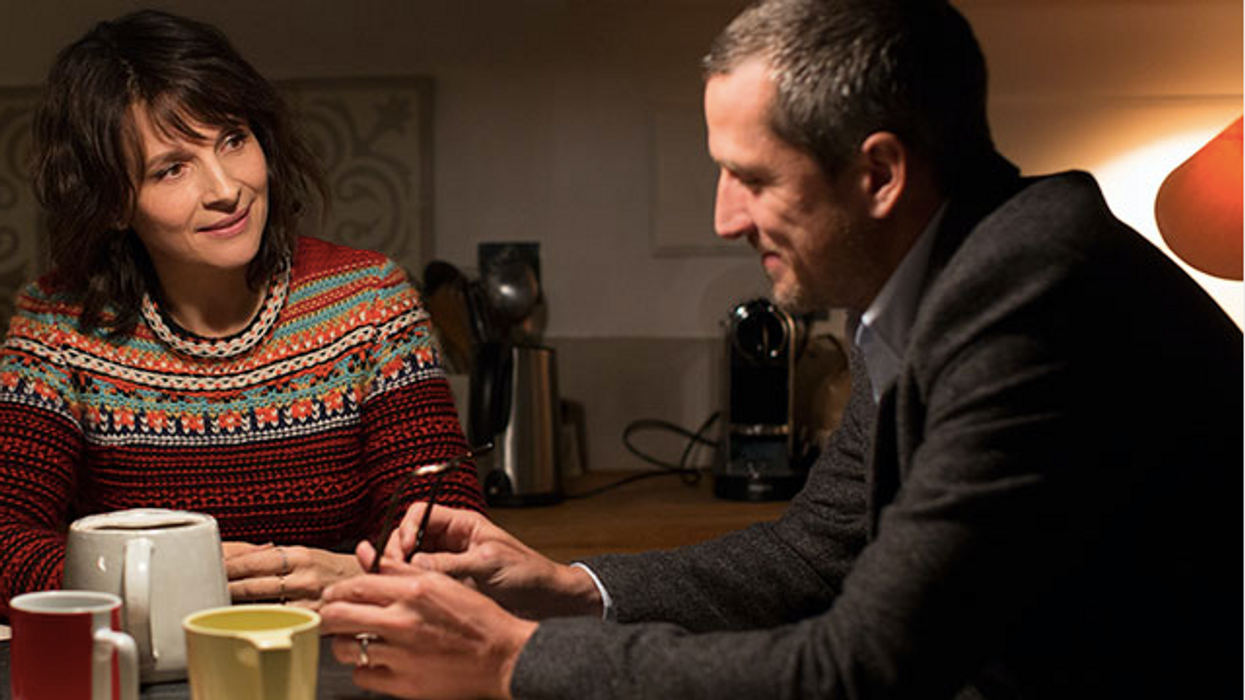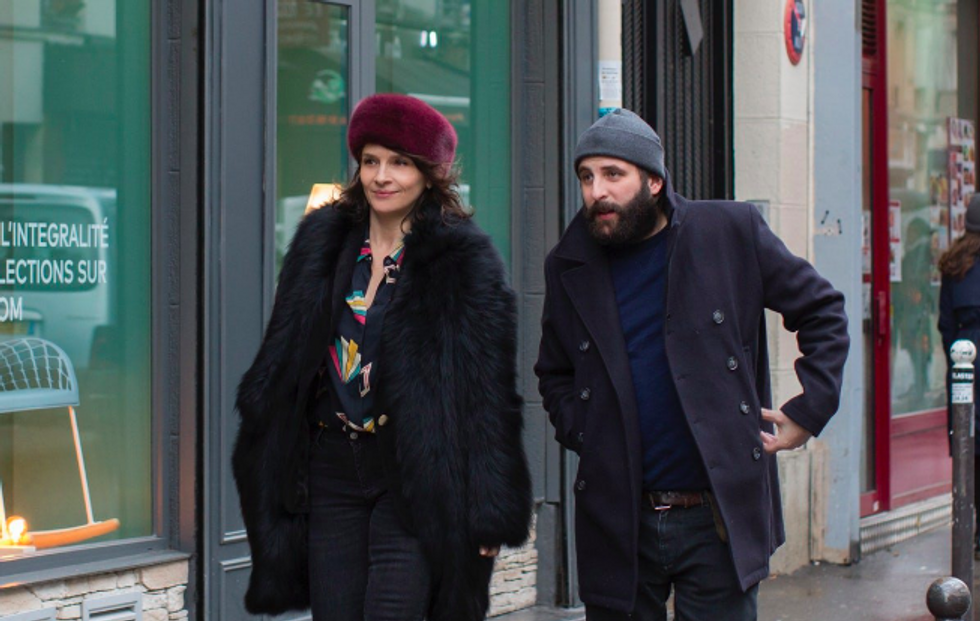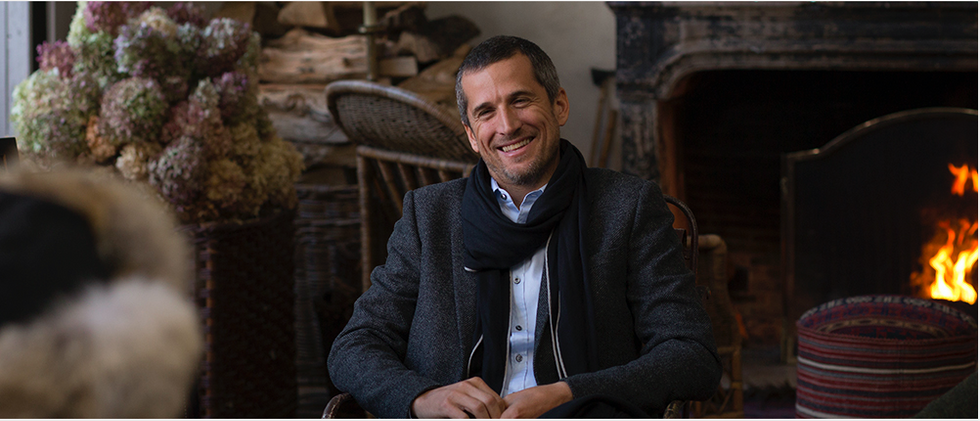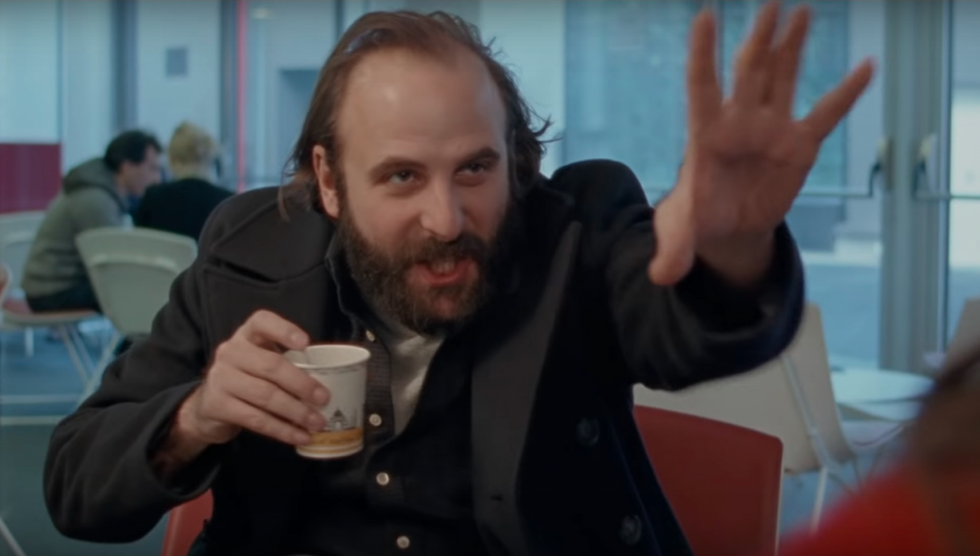Four Rules on Writing from French Auteur Olivier Assayas
Before French auteur Olivier Assayas found his calling as a writer/director, he was a painter and film critic.

Assaya’s own "No Film School" education took place in the 70’s and 80’s. After a few failed shorts, he began writing for the legendary magazine Cahiers du Cinema to hone his theory. Only after that was he able to craft his series of rule-breaking masterworks: Irma Vep (1996), Demonlover (2002), Paris Je T’aime (2006), Summer Hours (2008), Carlos (2010), Clouds of Sils Maria (2014), and Personal Shopper (2017).
Now, four decades in, it’s clear that he’s still thinking like a critic and a visual artist—truly the sum of all his parts.
Assayas is one of today’s most praised, scrutinized, and least predictable filmmakers. His films deliver more questions than answers (because each question has multiple answers, he argues). In our previous interview for NFS, Assayas discussed his filmmaking process through the lens of his genre-bending ghost story, Personal Shopper (2017). Initially spurned by critics, it wound up leading many “Best films of the Year” lists.

This year, with his latest feature Non-Fiction, about to hit U.S. theaters (May 3rd), our Assayas interview focuses on writing, in particular, how he keeps coming up with new ideas, how he adapts to the times, and how his approach to Non-Fiction was a radical change.
In many ways, Non-Fiction is an experimental film, but it plays like a comedy. It goes against the grain of traditional entertainment—and literally astounds with thought-provoking, belly-laugh wit. Titled Doubles Vies (Double Lives) in French, this film is both a loquacious, hilarious tête-à-tête...and a study in contrasts. Through the prism of two cheating couples, it juxtaposes classical romance with sordid affairs, print publishing with e-books, Michael Haneke with The Force Awakens.
The title represents layers: the divergence between real and fictitious lives—the way we multiply ourselves and nurture different personalities—in books, in art, on social media. It’s an intellectual wet-dream turned into pop culture: surprisingly accessible and delightfully entertaining.
How did Assayas turn this heady talkie into a laugh fest? As he’s about to explain, it all boils down to four key rules.

Rule #1: Know Your Structure Before You Start
“I never start writing before I have a structural backbone,” the French filmmaker asserted. “Where things begin, where they end.” Assayas may be known as a rebel, but after 40+ years as a writer/director, he has learned the value of structure. “Only once I’m very sure of this do I begin. With Non-Fiction, however, I started writing before I even had characters,” he laughed, “and in this case, the structure was having no structure.”
Despite this aberration, Assayas insists that structure is especially important for first-time and emerging filmmakers.
“I genuinely think that when you first start making films you need structure. If you have a framework to start with, it will allow you and the actors more freedom within the scenes. First, you build your foundation, then you tweak it over and over—that way you don’t risk losing the tightness of the narrative. Then, after you make a couple of movies, the framework will come instinctively.” The director offered a knowing smile. “And that’s when you can start to experiment.”
This approach goes beyond writing. Paradoxically, Assayas argues that establishing structure early on will allow you more freedom later, both on set and in the editing room. And every bit of practice counts. “The process of practicing filmmaking—or any art for that matter—sharpens your instincts and gives you more security as an artist,” he opined, nodding thoughtfully. “Slowly but surely, you become a little bit more daring. You know you can trust your gut to tell you when you’re going down the wrong route. In my recent films, I’ve been trying to give myself more and more freedom to invent the film while I’m in the process of making it before it’s fully conceptualized. I would have never done that when I started making films. Back then, I took fewer risks because I needed confidence. I needed to feel in control.”
It all goes back to Assayas’s background in painting: he learned that in order to be an impressionist, you first need to learn the classics.

Rule #2: Practice First, Then Take Risks
Forty years into his career, Assayas feels increasingly free to take risks.
Non-Fiction is a prime example. The film’s screenplay began as an on-the-page experiment: instead of parsing out the most vital, economical dialogue in order to telegraph a message, Assayas went full Tarantino.
“I wanted to reproduce the rhythms of natural conversation, I let myself stretch it as far as I could,” he explained. “I knew a scene was over only when I had nothing more to say. Basically, I was discovering the film scene by scene, without a master plan. The one thing I was sure of was that the movie would be completely dialogue driven and that nothing of importance would happen.”
Non-Fiction certainly lives up to this original premise—but it doesn’t drone on. Each exchange is naturalistic, captivating, mordant: a series of commentaries on the modern world, at once relatable and immediate. We actually feel as if we’re at the table with Assayas’ characters, arguing with Juliette Binoche about Twitter. It also helps that he was so passionate about his subject that the words virtually tumbled out of his head onto the page.
“Non-Fiction is a movie entirely about ideas.” The writer/director wiggled his fingers, making fun of his own amorphous description. “In that sense, it was both extremely indulgent, and something I’d never done before.” He paused. “It’s supposedly common knowledge that you should never make a movie about ideas because audiences will get bored. But…”
His smile broadened into a grin.

Rule #3: Write As If You’re the Audience
Popular opinion has never discouraged Assayas. He has made it his mission to ignore its importance—or at the very least, test it, and fail gloriously. In the process, he has learned yet another rule: never underestimate the intelligence of your audience.
“Every time I’ve done Q and A’s after screenings, in every possible film culture, I’ve found the audiences to be extremely sophisticated in terms of their questions and ideas.” He stroked his chin, shrugged. “So I thought, ‘Why not respect their intelligence? Why not try to do exactly what other movies don’t do?’ And that’s how I made Non-Fiction: I wrote this film as if I were the viewer.”
The result? Assayas wound up with a film where highly-literate French socialites debate cultural mores—and yet he dodges pretension. Even better, he wound up with another film festival hit.
His musing continued: “I think you can communicate ideas as long as you don’t pontificate. If your approach is light and humorous, people will accept it. As opposed to a preachy film.”
An enormous part of Non-Fiction’s appeal is how it balances the crude with the high-brow, affairs of the body with affairs of the mind. Assayas admits that this wasn’t easy.
“The biggest challenge was to make a movie that holds together with basically nothing else besides acting.” He grinned, relishing the challenge even in retrospect. “I actually had 12 full pages of dialogue between actions. I worried that I might put my audience to sleep: it’s difficult to keep a movie exciting and entertaining if you don’t have much to hold onto visually. But I decided to follow my gut.”
Remember that structural backbone? Along with Non-Fiction, Assayas cites his 1996 film-about-filmmaking, Irma Vep, as another idea-centric project that holds up only because of a distinct through-line of character-comedy. “The comedy comes less from the ideas,” he explained, “than from understanding and relating to the characters.”
In other words, if you create characters who feel right to you, and write dialogue for them that makes you laugh, your audience is likely to laugh along with you.

Rule #4: Be True to Yourself
The last and perhaps most important clue to Assayas’s enduring success is his respect for his own inner voice. By pairing self-awareness with a relaxed ‘Go with the Flow’ mentality, he stays true to himself even when exploring new ideas and formats.
“Filmmaking has been turned upside down since I started making films. I directed my first short in 1979, and I liked to think I was practicing the same medium as Fritz Lang”—he gave a wry grin—“but then digital technology changed so much of the process. Sound editing was the first thing to change in the early ‘90s. Then came editing with Avid machines, then digital intermediates changed color timing, then digital cameras, digital distribution. That changed us, and it changed our content.” He laughed outright. “I’m not even sure that we write the same screenplays when we work in Final Draft instead of using a pen.”
Everything keeps evolving, but Assayas greets it all like a kid in a candy shop. “All you have to do is adapt—as long as you remember that the most important things stay the same. Ultimately it comes back to writing a story, a character, emotions. Keeping it human.”

He smiled, leaning back in his chair before articulating his next thought. “Think of it like painting: in the old days, you painted on a small canvas because that’s all you could afford. Now, technology allows us to paint the craziest, grandest frescoes. But you don’t have to paint big. You can stick to impressionism or to the way modernists have simplified it, or somewhere in between.”
His own preference? Assayas favors rigor over nostalgia. Passion over technique. He also recommends a strong backbone. “The range may have changed, but you have to position yourself in terms of where your own sensibility is. And then stick to your guns no matter what the world tells you. If you’re true to yourself, the world may eventually come around—and if not, you’ll still feel better for having followed your instincts.” He leveled his gaze. “That’s what will give you freedom.”
Above all, Assayas is still having fun. 40 years and 30+ films in, he still has more to say. His mind stays curious, his spirit stays youthful. He sees change as a challenge. He even appreciates piracy. “When I go to China and see pirated versions of my film in the shops, I’m kind of happy.” He gives an exuberant grin, signifying way more than ‘kind of.’ “Think about it: they went through the trouble of stealing it, printing it, making the cover. They must like the film! So please—go ahead, steal my films. Things like that confirm that I had the right instinct.”











